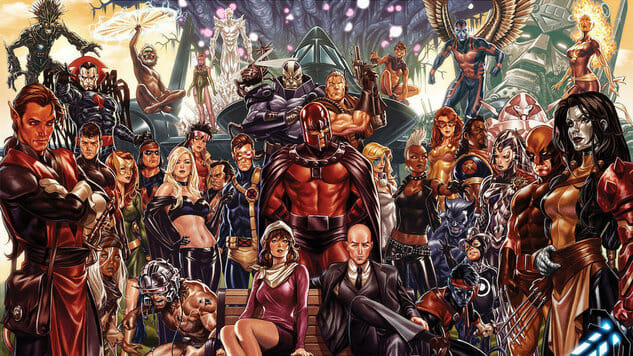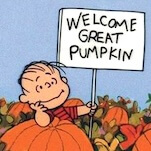Jonathan Hickman Might Just Save the X-Men From Themselves
A Decade of Nostalgia & Mishandling Has Left the Franchise in a Rut—is Hickman the Solution?
Main Art by Mark Brooks
Marvel Comics had a busy weekend at the Chicago Comic & Entertainment Expo (C2E2 for short). Donny Cates and Ryan Stegman’s Absolute Carnage event was confirmed to launch this August; newly Marvel-exclusive writer Tini Howard announced an unexpected Death’s Head series with artist Kei Zama; Jason Aaron’s War of the Realms follow-up was revealed to be a Valkyrie series co-written by Immortal Hulk scribe Al Ewing; and one of the longest-whispered rumors in all of modern superhero comics was finally brought into the light of day: Jonathan Hickman is returning to Marvel Comics to revamp the X-Men franchise—and not a moment too soon.
Before we explain our optimism, here are the facts: starting in July, Jonathan Hickman will write two twice-monthly series, effectively weaving together into a weekly dose of Hickman. Extermination artist Pepe Larraz will draw House of X, while Amazing Spider-Man and Hunt for Wolverine contributor R.B. Silva will illustrate Powers of X, which is pronounced “Powers of 10,” evoking the Roman numeral. Colorist Marte Gracia, who has contributed to the X-Men on and off since 2010, will color both series.
Concrete details for the two titles are scarce, beyond Marvel Editor-in-Chief C.B. Cebulski comparing House of X and Powers of X to prior franchise milestones like Giant-Size X-Men #1, suggesting that Hickman may use the two limited series as a launch pad for a longer run on the X-Men. Both Cebulski and Hickman described the two series as a “radical” change for the mutants, and an accompanying promotional image by artist Mark Brooks posed more question than answers. As seen below, Brooks’ image pulls from a hodge-podge of X-Men eras, from Disco Dazzler and Punk Storm to pint-sized Havok and three variations on Wolverine. Most puzzlingly, the image is flanked by characters who appear to be amalgamations of Nightcrawler and Gambit on one side, and Magik and Colossus on the other. At the center, Magneto stands above a seated (but presumably ambulatory, given his crossed legs) Professor Charles Xavier and a woman fans have suggested may be an out-of-costume Jean Grey, or potentially geneticist Moira McTaggert, a character who died way back in 2001.

House of X/Powers of X Promo Image Art by Mark Brooks
Of course, there’s no way of knowing how literally Brooks’s image is intended to be taken, or if Hickman’s two series will muck with X-Men history or merely revisit notable eras. Either way, Hickman’s arrival marks a potential course-correction for a franchise that has for too long been mired in nostalgia, and which has sacrificed newness at nearly every turn in exchange for ever-diminishing attempts at pacifying a demanding fandom still chasing the highs of Chris Claremont and/or the ‘90s X-Men boom.
Hickman’s prior series at Marvel—Secret Warriors, S.H.I.E.L.D., Fantastic Four, FF, Avengers, New Avengers and Secret Wars—dealt almost exclusively with big, bold, occasionally confusing ideas. While some fans consider his character work lacking or even cold, it’s impossible to downplay Hickman’s ongoing impact on the publisher’s mythos. In the pages of Infinity, Hickman helped elevate Thanos ahead of his MCU debut, and created the Black Order who stood by Thanos’ side in Avengers: Infinity War. (Ironically, Infinity also unleashed the Terrigen Mists, the transformative Inhumans vapor that proved toxic to mutants and inspired one of the worst X-Men eras in recent memory.) Hickman’s Fantastic Four pushed Reed Richards and his family to the bleeding-edge of Marvel-U. sci-fi, and his dual Avengers series expanded the scope of the team beyond familiar faces like Iron Man and Thor to include everyone from Shang-Chi and Hyperion to the X-Men’s own Sunspot and Cannonball. Secret Wars, which Paste named Marvel’s best event comic in modern history, capped off his Marvel period by resetting the playing field for the publisher, integrating alternate-reality characters like Miles Morales and Old Man Logan into mainstream continuity in the process. Now, three years after departing the publisher to focus on creator-owned series like East of West, Hickman is poised to join the X-Men franchise after a…challenging…few years for Marvel’s merry mutants.

New X-Men #114 Cover Art by Frank Quitely, Tim Townsend & Brian Haberlin
Following critical and commercial heights under Grant Morrison and co.’s radical 2001 reimagining New X-Men, the franchise has experienced, charitably, just as many misses as hits. Buffy the Vampire Slayer creator Joss Whedon and Planetary artist John Cassaday united for Astonishing X-Men, which will sell trade paperbacks until the sun extinguishes, but few runs between Whedon and Cassaday’s departure in 2008 and this weekend’s Hickman news have reached anything approaching a reader consensus of quality. Even the best post-Morrison series, like Jason Aaron’s Wolverine and the X-Men, drawn by artists including Nick Bradshaw and Chris Bachalo, spent much of their page count trying to recapture the mix of action and melodrama that characterized the franchise’s heyday between the late ‘70s and early ‘90s, during which X-Men godfather Chris Claremont introduced most of what’s considered foundational franchise canon. Aaron’s best-remembered arcs focused on the Hellfire Club, Wolverine’s deadly past, trips to Shi’ar space, the Brood and potential futures—all plot beats pioneered by Claremont. Those series that haven’t looked overwhelmingly to the past have often been tied up in character rehabilitation; current Uncanny X-Men writer Matthew Rosenberg’s franchise work has largely involved resurrecting and/or redeeming mutants like Banshee, Havok, Jamie Madrox and Jean Grey who were killed off or dragged through unpopular status-quo changes.
-

-

-

-

-

-

-

-

-

-

-

-

-

-

-

-

-

-

-

-

-

-

-

-

-

-

-

-

-

-

-

-

-

-

-

-

-

-

-

-











































